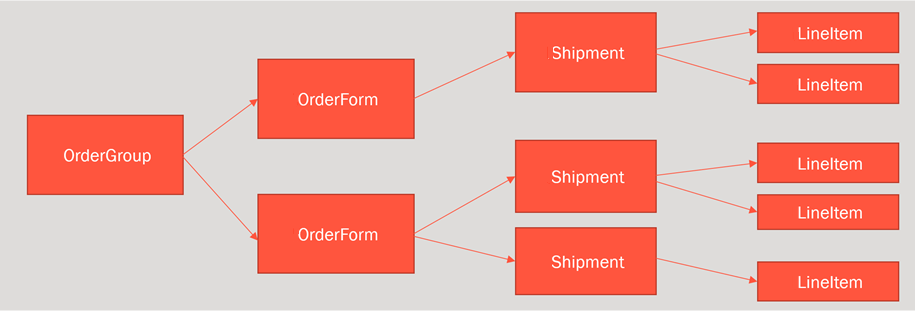 Orders
Orders
Order management is a central part of the e-commerce system. Since the majority of orders are created from the front-end site, the ordering process is usually automatic, following an order management workflow. In some cases, orders need to be manually managed, which you can do from the Order Management view.
Carts versus orders
A cart is for a buyer, who selects items then proceeds to check out.
After the buyer completes payment, the cart is converted to purchase order Commerce: An order that has been registered and paid for. Typically, it has an associated purchase order number.. At that point, it is processed by the seller, who performs actions such as: arranging shipment, delivering the product, and completing the order.
Structure of orders
The structure of a shopping cart or order is depicted below.

A cart or an order can contain one or more order forms. In most B2C sites, there is only one form per cart or order. In B2B sites, multiple forms may be used where a buyer places an order for different sections of an organization. Each section has its own form, with separate details.
Each order form can have one or more shipments Commerce: a collection of products from a purchase order, ready to be shipped after going through inventory check and other verifications., and each shipment is made up of one or more line items Commerce: the products/SKUs/packages/bundles on one line of a purchase order..